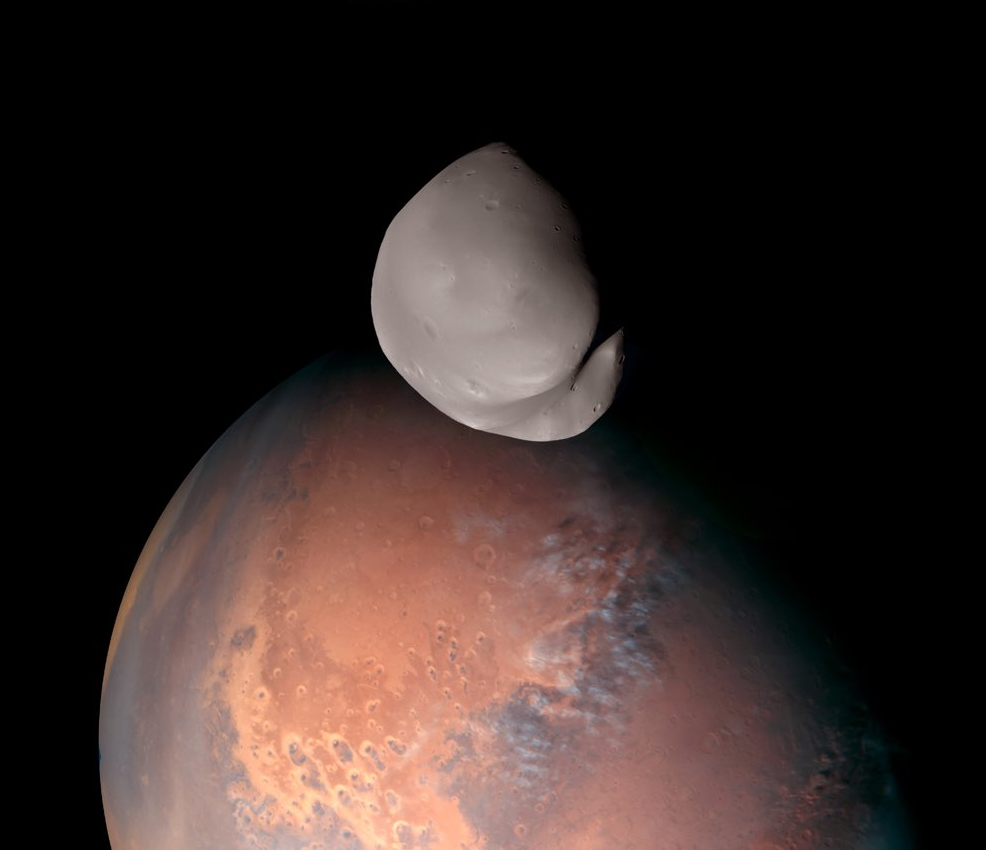
25th April 2023 Clearest-ever picture of Mars' moon Deimos The science team behind the Emirates Mars Mission has revealed ground-breaking imagery and data that advances our understanding of Deimos.
Deimos is one of the two small moons of Mars, the other being Phobos. Discovered in 1877, and named after the Ancient Greek god of terror, this rocky and irregularly shaped moon has a mean radius of 6.2 km (3.9 mi) and orbits at 23,500 km (6.9 Mars radii), making it the smaller and outermost natural satellite. NASA's Mariner 9, which arrived at Mars in 1971, became the first spacecraft to capture views of Deimos. In the half-century since then, various other missions have imaged Deimos, but always from afar. Limited information has been available to scientists, as Deimos is relatively less explored compared to Mars and its other moon, Phobos. However, new images and data have just been released by the United Arab Emirates Space Agency (UAESA), which launched the Hope mission in 2021 to study Mars and its atmosphere. In addition to Mars itself, the probe has now made global observations of Deimos. Its approach of just 65 miles (104 km) is the closest ever by a spacecraft.
As well as showing Deimos in more detail – including the first images of its far side – insights have been gained about its makeup and structure. The new observations challenge the longstanding theory that Mars' moons are captured asteroids, and instead point to a planetary origin. In other words, both Deimos and Phobos likely came from Mars itself, possibly ejected from a large impact. Data from the infrared spectrometer on Hope suggests that the moons are "more akin to a basaltic Mars, than a D-type asteroid such as the Taggish Lake meteorite that is often used as an analogue for the spectral properties of Phobos and Deimos," according to project scientist Christopher Edwards. "These images and observations represent a significant step forward in our knowledge of Deimos, its atmosphere, composition, origins, and what this means for our understanding of Mars more broadly," the UAESA said in a statement. The agency obtained these high-resolution images in March. The mission is expected to continue flying by Deimos until at least early 2024. "Given the remarkable performance of the Hope mission, which exceeded all expectations, and the great achievements of the EMM's science team providing the global science community with new findings about Mars, we are extending the Emirates Mars Mission for a further year," said Sarah Al Amiri, the UAE's Minister of State for Public Education and Advanced Technology.
Comments »
If you enjoyed this article, please consider sharing it:
|







